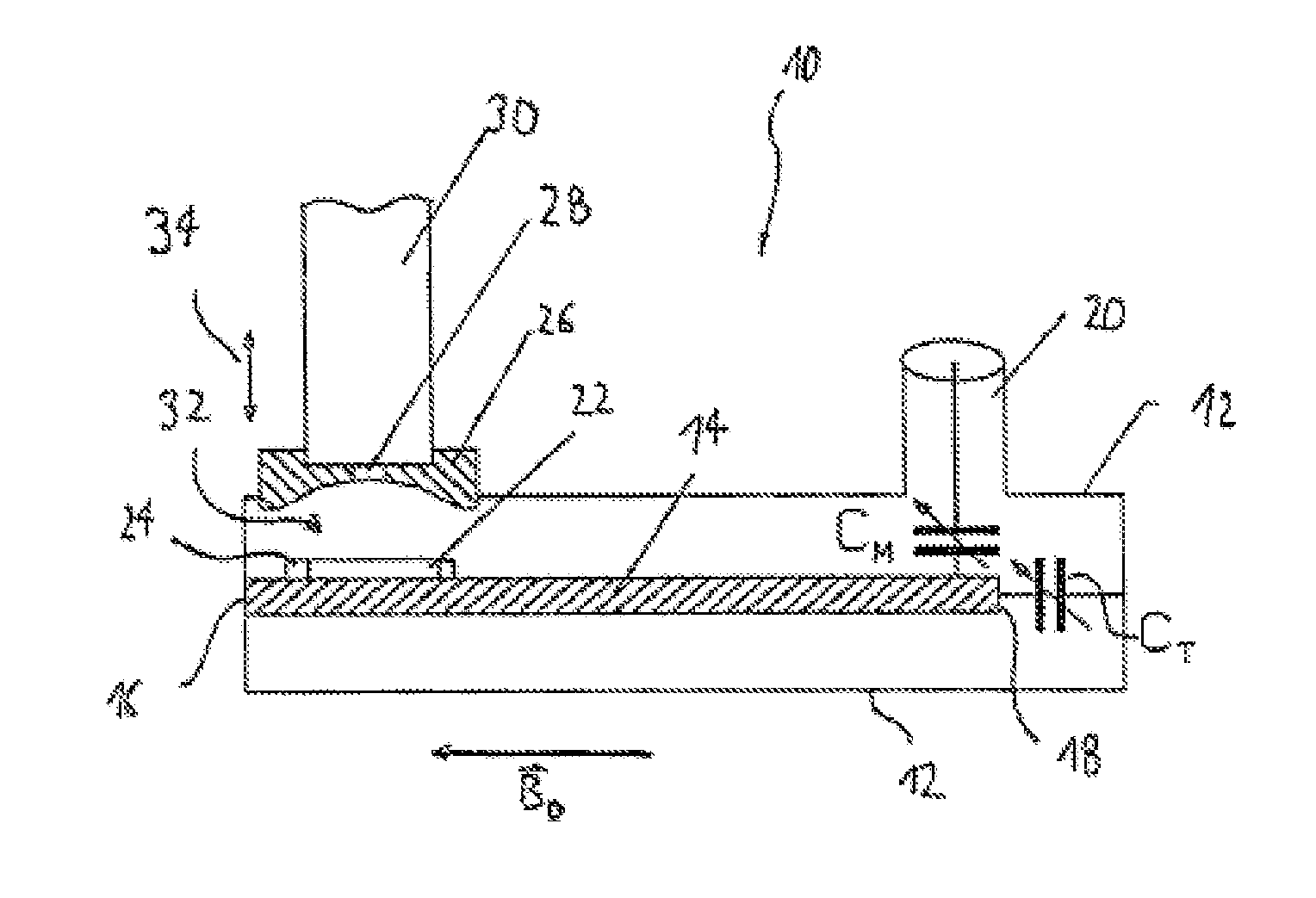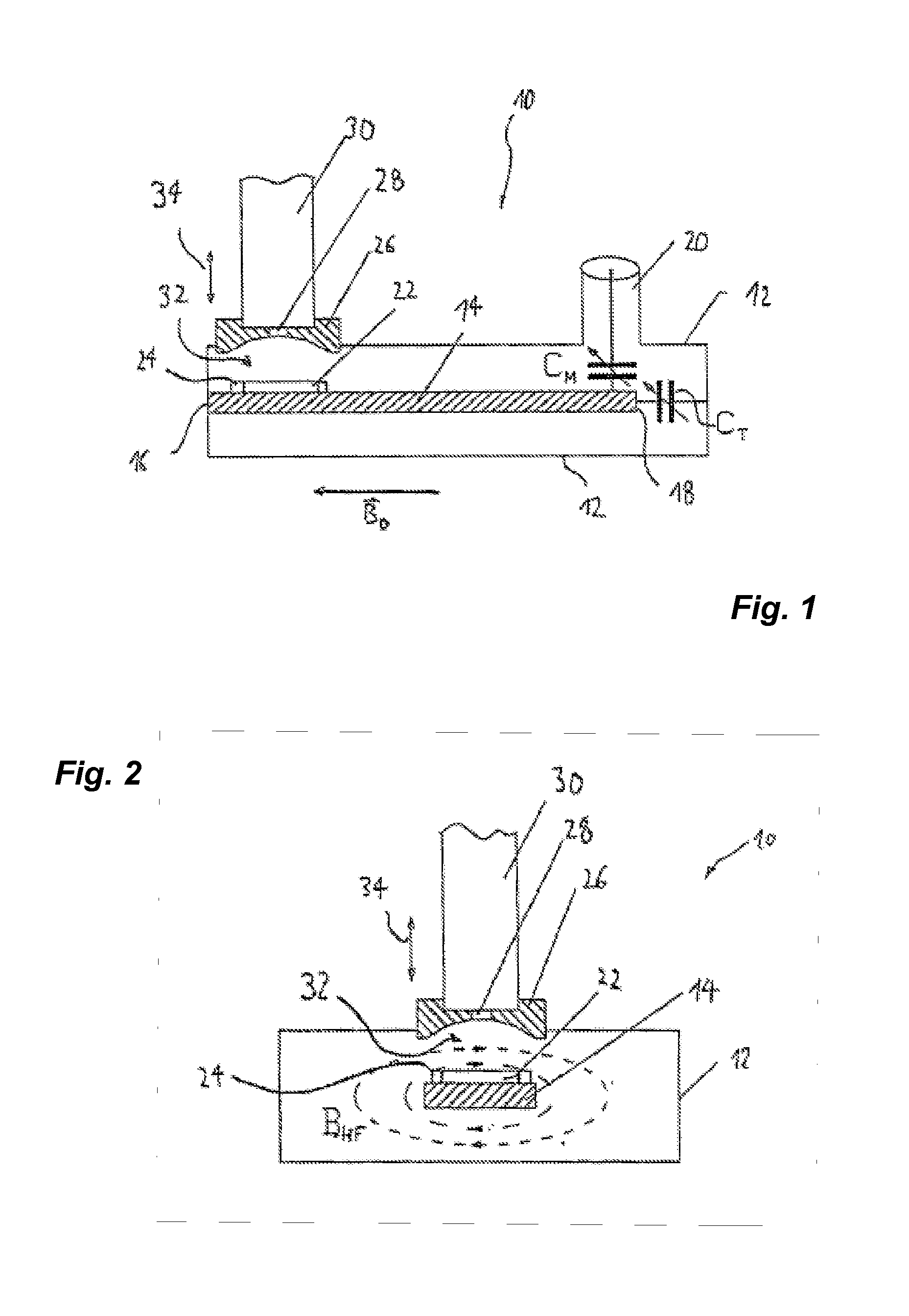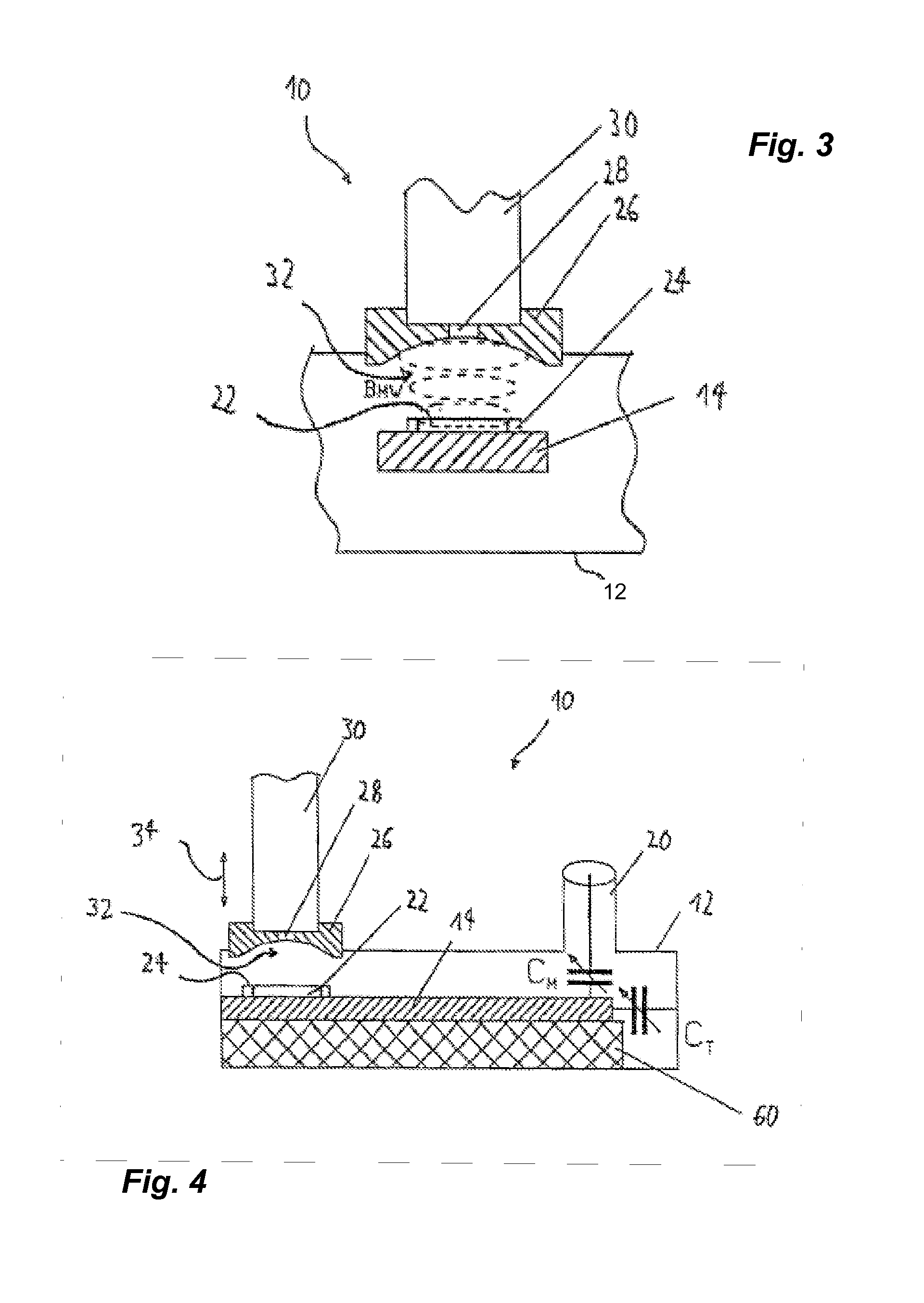Double-resonance structure and method for investigating samples by DNP and/or ENDOR
a double resonance and endorsynthesis technology, applied in the field of double resonance structure for dnp experiments and/or endorsynthesis, can solve the problems of limited extent, high cost, limited sample volume that can be accommodated in the helix resonator, etc., to achieve high magnetic field strength, increase nmr sensitivity, and dissipate heat generated
- Summary
- Abstract
- Description
- Claims
- Application Information
AI Technical Summary
Benefits of technology
Problems solved by technology
Method used
Image
Examples
Embodiment Construction
[0015]This object is achieved by a double-resonance structure and a method. The method is characterized by the use of the inventive double-resonance structure. Advantageous further embodiments are defined in the dependent claims.
[0016]The double-resonance structure according to the present invention differs from that known from the state of the art in that the HF resonator is formed by a strip resonator, where a section of the strip resonator at the same time forms a part of the MW resonator.
[0017]The “strip resonator” may be formed by any strip conductor that is a suitable resonator for the HF field and at the same time can be used as part of the MW resonator. One example of such a strip resonator may be a “stripline resonator” or a “microstrip resonator”. By using such a strip resonator, HF fields for NMR transitions can be generated with sufficient strength. At the same time, the strip resonator forms a section of the MW resonator. The MW frequencies that are relevant here are so...
PUM
 Login to View More
Login to View More Abstract
Description
Claims
Application Information
 Login to View More
Login to View More - R&D
- Intellectual Property
- Life Sciences
- Materials
- Tech Scout
- Unparalleled Data Quality
- Higher Quality Content
- 60% Fewer Hallucinations
Browse by: Latest US Patents, China's latest patents, Technical Efficacy Thesaurus, Application Domain, Technology Topic, Popular Technical Reports.
© 2025 PatSnap. All rights reserved.Legal|Privacy policy|Modern Slavery Act Transparency Statement|Sitemap|About US| Contact US: help@patsnap.com



